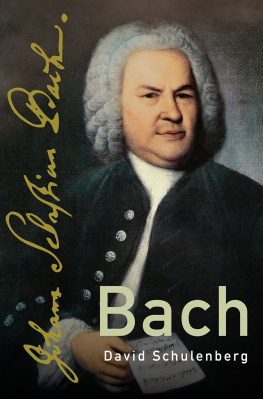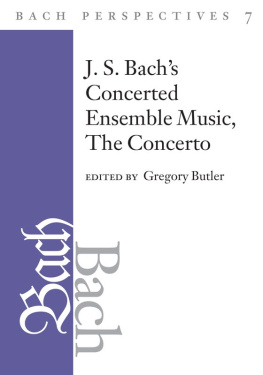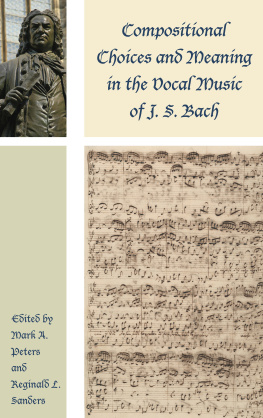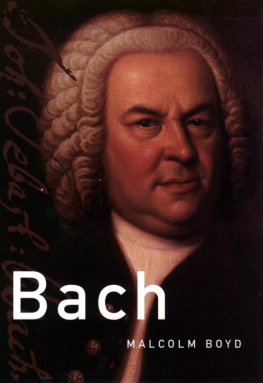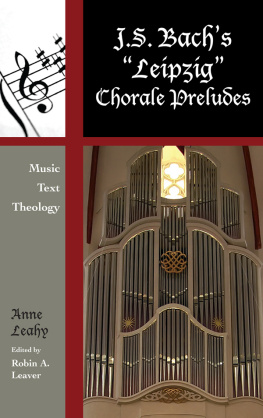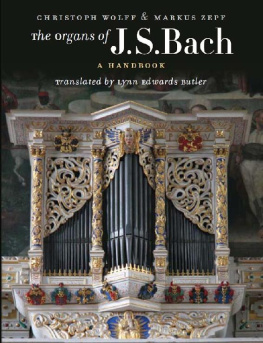Matthew Dirst - Bach Perspectives, Volume 10: Bach and the Organ
Here you can read online Matthew Dirst - Bach Perspectives, Volume 10: Bach and the Organ full text of the book (entire story) in english for free. Download pdf and epub, get meaning, cover and reviews about this ebook. year: 2016, publisher: University of Illinois Press, genre: Detective and thriller. Description of the work, (preface) as well as reviews are available. Best literature library LitArk.com created for fans of good reading and offers a wide selection of genres:
Romance novel
Science fiction
Adventure
Detective
Science
History
Home and family
Prose
Art
Politics
Computer
Non-fiction
Religion
Business
Children
Humor
Choose a favorite category and find really read worthwhile books. Enjoy immersion in the world of imagination, feel the emotions of the characters or learn something new for yourself, make an fascinating discovery.
- Book:Bach Perspectives, Volume 10: Bach and the Organ
- Author:
- Publisher:University of Illinois Press
- Genre:
- Year:2016
- Rating:3 / 5
- Favourites:Add to favourites
- Your mark:
Bach Perspectives, Volume 10: Bach and the Organ: summary, description and annotation
We offer to read an annotation, description, summary or preface (depends on what the author of the book "Bach Perspectives, Volume 10: Bach and the Organ" wrote himself). If you haven't found the necessary information about the book — write in the comments, we will try to find it.
The official publication of the American Bach Society, Bach Perspectives pioneers new areas of research into the life, times, and music of the master composer. In Volume 10 of the series, Matthew Dirst edits a collection of groundbreaking essays exploring various aspects of Bachs organ-related activities. Lynn Edwards Butler reconsiders Bachs report on Johann Scheibes organ at St. Pauls Church in Leipzig. Robin Leaver clarifies the likely provenance and purpose of a collection of chorale harmonizations copied in Dresden. George Stauffer investigates the ways various independent trio movements served Bach as an artist and teacher. In separate contributions, Christoph Wolff and Gregory Butler seek the origins of concerted Bach cantata movements spotlighting the organ and propose family trees of both parent works and offspring. Finally, Matthew Cron provides a broad cultural frame for such pieces and notes how their components engage in a larger discourse about the German Baroque organs intimation of heaven.|
CoverTitle PageCopyrightContentsPrefaceAbbreviationsBachs Report on Johann Scheibes Organ for St. Pauls Church, Leipzig: A ReassessmentBachs Choral-Buch? The Significance of a Manuscript in the Sibley LibraryMiscellaneous Organ Trios from Bachs Leipzig WorkshopDid J. S. Bach Write Organ Concertos? Apropos the Prehistory of Cantata Movements with ObbligatoThe Choir Loft as Chamber: Concerted Movements by Bach from the Mid- to Late-1720sContributorsGeneral Index|
Rich with information on various aspects of the organ music of Bach, the essays are of interest to Bach researchers, organists, organ history specialists, and other musicians, and is a worthy addition to all libraries.Notes
|Matthew Dirst is a professor of music at the Moores School of Music at the University of Houston. He is the author of Engaging Bach: The Keyboard Legacy from Marpurg to Mendelssohn.
Matthew Dirst: author's other books
Who wrote Bach Perspectives, Volume 10: Bach and the Organ? Find out the surname, the name of the author of the book and a list of all author's works by series.


